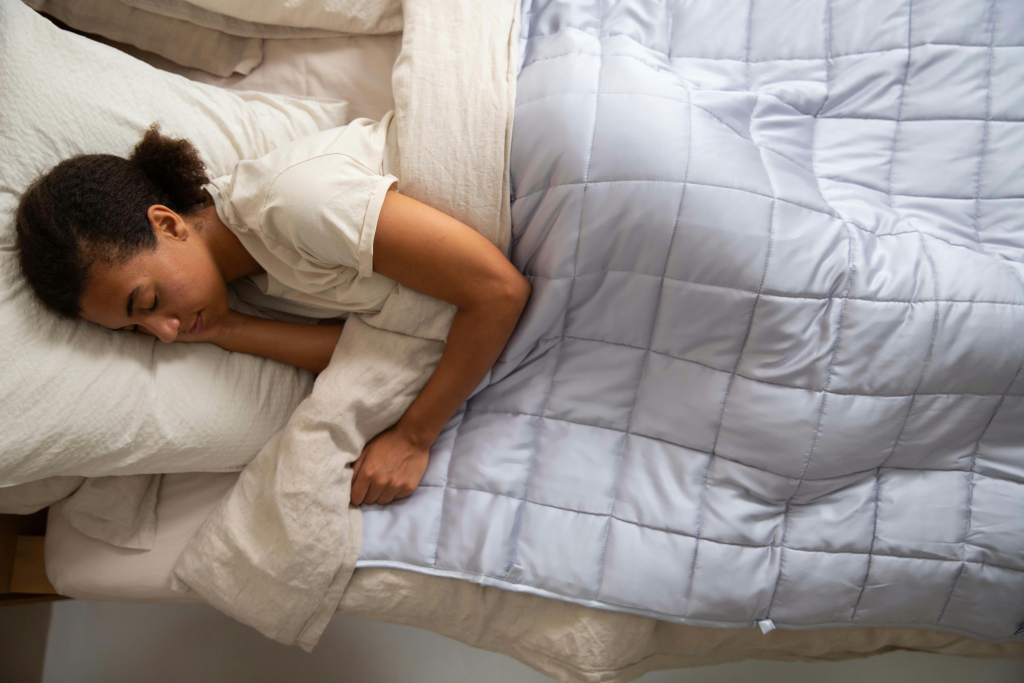You’ve done the sleep hygiene checklist. You’ve banned blue light, embraced meditation, and even tried that pricey magnesium spray. Yet, you still find yourself staring at the ceiling at 2 AM, or waking up with a stiff back that greets you like an unwelcome guest.
If this sounds familiar, you’re not alone. We often chase complex solutions, overlooking the most fundamental element of a good night’s rest: the surface you sleep on. Your mattress isn’t just a piece of furniture; it’s the foundation upon which your health, energy, and well-being are built every single night.
For years, I was a skeptic. I thought a mattress was just a mattress. That was until I finally replaced my old, sagging one. The transformation wasn’t subtle. The morning aches vanished. The mid-afternoon energy crashes became a rarity. It was a profound revelation: The quality of your sleep is inextricably linked to the quality of your mattress.
This post is your deep dive into that connection. We’ll answer the most common questions, break down the essential elements, explore the 25 specific ways your mattress makes or breaks your sleep, and finally, give you tailored recommendations based on how you sleep. Let’s turn those restless nights into a thing of the past.
Answering Your Top Questions on Mattresses and Sleep
Before we get into the details, let’s tackle the big questions on everyone’s mind.
1. Can a bad mattress really cause poor sleep?
Absolutely. A mattress that doesn’t support your body properly can prevent you from falling into deep, restorative sleep stages (like REM and slow-wave sleep). It can cause micro-awakenings throughout the night as your body subconsciously shifts to find a comfortable position, fragmenting your sleep cycle without you even realizing it.
2. How does a mattress affect back pain?
This is the most common concern. A mattress that is too soft allows your hips and shoulders to sink too deeply, putting your spine into an unnatural, U-shaped curve. A mattress that is too firm doesn’t allow them to sink at all, jamming your joints and creating pressure points. Both cause your spine to misalign, straining muscles and ligaments overnight, which leads to morning stiffness and pain.
3. How often should I replace my mattress?
Most experts agree on a lifespan of 7-10 years. However, this isn’t a hard rule. If you notice visible sagging, wake up with new aches, sleep better in other beds (like a hotel), or if your allergies have worsened (due to dust mite accumulation), it’s time for a replacement, regardless of age.
4. What is the best type of mattress for a good night’s sleep?
There is no single “best” type. The ideal mattress is deeply personal and depends on your preferred sleeping position, body weight, and any specific pain points. However, hybrid mattresses (combining innersprings with foam or latex layers) have become incredibly popular for their ability to offer a balanced feel of support, pressure relief, and cooling.
5. Is a firmer mattress always better for your back?
This is a pervasive myth. While a mattress shouldn’t be overly soft, a rock-hard surface can be just as detrimental. The goal is supportive comfort—a mattress that is firm enough to keep your spine neutral but soft enough to contour to your body’s curves and relieve pressure on your hips and shoulders.
The Core Elements: How a Mattress Works Its Magic (or Mayhem)
A mattress impacts your sleep through a few key mechanical elements. Understanding these helps you make an informed choice.
- Support: This is the mattress’s ability to keep your spine in a neutral, aligned position. It’s the foundational “push-back” that prevents your heavier body parts from sinking too far. Good support is non-negotiable for avoiding back pain.
- Pressure Relief: This is the mattress’s ability to conform to your body, distributing your weight evenly. Without it, pressure builds up on bony prominences like shoulders and hips, cutting off circulation and causing pain and numbness. Memory foam is renowned for its superior pressure relief.
- Temperature Regulation: Sleep initiation is tied to a drop in core body temperature. A mattress that traps heat can disrupt this process, leading to restless, sweaty nights. Materials like gel-infused foam, latex, and coils promote airflow and are naturally cooler.
- Motion Isolation: If you share a bed, this is critical. It’s the ability of a mattress to absorb movement so one partner’s tossing and turning doesn’t disturb the other. Memory foam and latex excel here, while traditional innersprings tend to transfer more motion.
- Durability: A mattress is a long-term investment. Quality materials and construction determine how well it maintains its support and comfort properties over years of use, protecting you from premature sagging and discomfort.
The 25 Ways Your Mattress Impacts Your Sleep Quality
Now, let’s get specific. Here are 25 direct impacts your mattress has on your life, from the obvious to the surprisingly profound.
- Spinal Alignment: The #1 job of a mattress. Proper alignment reduces stress on muscles and discs.
- Pressure Point Relief: Eliminates pain in shoulders, hips, and heels, allowing for uninterrupted sleep.
- Sleep Onset Latency: A comfortable mattress helps you fall asleep faster.
- Sleep Duration: You’re less likely to wake up prematurely due to discomfort.
- Sleep Depth: Facilitates the crucial deep (Stage 3) and REM sleep cycles, where physical and mental restoration occur.
- Allergy and Asthma Management: Hypoallergenic materials and antimicrobial treatments protect against dust mites and mold.
- Pain Management: Directly influences back pain, neck pain, sciatica, and arthritis symptoms.
- Circulation: Proper pressure relief ensures blood flow isn’t restricted to limbs.
- Partner Disturbance: High motion isolation means you won’t feel every move your partner makes.
- Temperature Balance: A cool sleeping surface prevents overheating and night sweats.
- Stress Reduction: Physical comfort translates to mental relaxation, lowering cortisol levels.
- Morning Energy Levels: Waking up refreshed and not fatigued sets the tone for your entire day.
- Cognitive Function: Quality sleep improves memory, focus, and decision-making.
- Mood Regulation: Sleep deprivation from discomfort is a fast track to irritability and anxiety.
- Immune Function: Deep sleep is when your body repairs itself and fights off illness.
- Sexual Health: A comfortable, supportive surface can improve intimacy and comfort.
- Edge Support: Firm edges prevent the “roll-off” feeling, making getting in and out of bed easier and utilizing the whole sleep surface.
- Posture: Consistent spinal support overnight contributes to better posture during the day.
- Tossing and Turning: Reduced significantly on a supportive mattress, leading to more consolidated sleep.
- Durability and Value: A well-made mattress protects your investment and sleep quality for years.
- Noise: A quiet mattress (no squeaky springs) prevents auditory disturbances.
- Mental Health: Chronic pain from a poor mattress is linked to higher rates of depression.
- Weight Management: Poor sleep disrupts hunger hormones (ghrelin and leptin), increasing cravings.
- Personalization: The right firmness level for your body and sleep position is a game-changer.
- Overall Quality of Life: It’s the cumulative effect. Better sleep every night improves virtually every aspect of your existence.
Finding Your Perfect Match: Tailored Recommendations
This is the most personal part of the journey. The best mattress for you is dictated by how you sleep. Here’s a breakdown of what to look for and a few highly-rated examples in each category.
For Side Sleepers:

- What You Need: Plush to Medium Soft feel with excellent pressure relief at the shoulders and hips. Your mattress must allow these areas to sink in just enough to keep your spine straight.
- Best Materials: Memory foam is a classic for side sleepers due to its superb contouring. Look for models with zoned support (softer foam at the shoulders, firmer at the hips) or high-quality latex.
- Recommendations:
- Helix Sunset: Specifically designed for side sleepers, it’s softer and has targeted pressure relief.
- Nectar Memory Foam: A budget-friendly option known for its classic, contouring memory foam feel that cushions joints.
- Saatva Graphite Memory Foam Cooling Pillow: A luxury innerspring with a pillow-top for those who want the classic cloud-like feel with robust support.
For Back Sleepers:

- What You Need: Medium Firm to Firm feel with balanced support and contouring. It must support the natural curve of your lumbar spine without sagging.
- Best Materials: Hybrids are fantastic for back sleepers, offering the support of coils with the comfort of foam or latex on top. Firm memory foam or latex also works well.
- Recommendations:
- Nectar Classic Hybrid: A hybrid with firm edge support and a feel that many compare to a high-end hotel bed.
- DreamCloud Classic Luxury Hybrid Gel Memory Foam: Ideal for athletic back sleepers, providing firm support and cooling technology for enhanced recovery.
- Saatva Cloud Memory Foam Pillow: Often considered the gold standard for back sleepers, offering fantastic lumbar support through its dual coil system.
For Stomach Sleepers:

- What You Need: The Firmest feel of all positions to prevent your hips from sinking and hyperextending your lower back.
- Best Materials: Innerspring or firm hybrids provide the necessary push-back to keep your spine neutral.
- Recommendations:
- BedStory Firm Queen Mattress: Specifically designed for plus-sized sleepers and stomach sleepers who need maximum support.
- Beautyrest Days End Extra Firm Mattress: A flippable mattress with an ultra-firm side and a slightly less firm side, literally built for those who crave a very firm surface.
- Saatva Latex Pillow: Provides the sturdy, supportive feel that prevents sinkage for stomach sleepers.
For Combination Sleepers:

- What You Need: A Medium Firm, responsive mattress. You need a surface that allows you to change positions easily without feeling “stuck.” It must be comfortable in all positions.
- Best Materials: Latex and hybrids are top choices. They offer a buoyant, responsive feel that makes moving around effortless.
- Recommendations:
- Cool Gel Chill Medium Firm Memory Foam Mattress: Made of responsive, bouncy, and cooling gel, it’s easy to move on and great for hot sleepers.
- Serta Perfect Sleeper X: Exceptionally cooling and responsive, making it ideal for those who tend to sleep hot and move around a lot.
- Saatva Down Alternative Pillow: An adjustable airbed allows you to literally change the firmness on each side with a remote, perfect if you and your partner have different needs.
Remember: These are starting points. Your body weight and personal preference for feel (e.g., “hug” vs. “bounce”) will determine the final choice.
Your Foundation for a Better Tomorrow
Investing in a high-quality mattress that addresses your unique needs isn’t an extravagance; it’s an investment in your health. It’s the silent partner that supports you for a third of your life, influencing how you feel, think, and perform during the other two-thirds.
Don’t settle for mediocre sleep. Listen to what your body is telling you each morning. If it’s whispering (or shouting) complaints about aches, stiffness, and fatigue, it might be time to look down at what’s beneath you. Use the recommendations as a guide, but always lean on generous sleep trials to find your perfect match. The path to deeper, more restorative sleep—and brighter, more energetic days—might just be a new mattress away.
Disclosure: This blog uses affiliate links. I may earn a commission at no extra cost to you if you shop through my recommendations. Thanks for supporting IzzyGoes!
